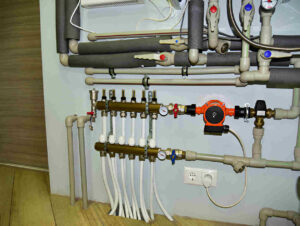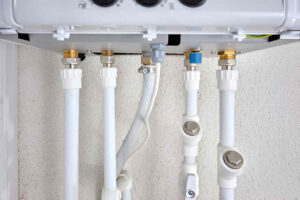How Does an Instant Water Geyser Work?
Introduction
It’s normal to be curious about how instant water geyser works. Because of rising energy costs and the need for ease of use, quick geysers (also known as portable or on-demand water heaters) are now a popular choice. They produce hot water immediately, rather than retaining a large amount of water like standard storage geysers do.
In this tutorial, we will discuss the procedures involved in operating instant geysers, as well as their various types, advantages, limitations, safety measures, and maintenance recommendations. We will also provide you with a comprehensive resource center that includes guidelines linked to geysers and compares them to other types of geysers.
What Is an Instant Water Geyser?
A small gadget called a quick water geyser heats water straight without a tank. The water is heated by a heating element or gas stove, and the water is ready to use in a matter of seconds.
Check out our full guide on How Does a Hot Water Geyser Work for a full breakdown of the differences between storage models and quick models.

How Instant Water Geyser Works
Cold Water Entry & Flow Sensor Activation
When you turn on the hot water faucet, cold water flows into the geyser through the pipe that allows it to enter. A flow monitor detects that the water is flowing and activates the heating system.
Heating Process
- In electric instant geysers, water flows over a heating element that heats it very quickly. Detailed information about Water Geyser Parts can help you understand the parts.
- A burner in a gas quick geyser warms the water through a heat exchanger.
Temperature Regulation
The timer makes sure the water doesn’t get too hot. When the flow stops, safety cut-offs turn off the element.
Check out our new guide on Electric & Gas Geyser Prices in Pakistan if you’re switching between electric and gas types.
Types of Instant Geysers
- Electric Instant Geyser – Compact, point-of-use.
- Gas Instant Geyser – High flow, whole-house use.
- Horizontal Geyser – Space-saving types; for more information, read our post on Horizontal Geysers.
- Mini Geysers – Check out our guide on Mini Geysers for Kitchen Use in India for more information. They are great for kitchens and small bathrooms.
Advantages of Instant Geysers
- On-demand hot water with no waiting.
- Energy efficient, as no storage loss occurs (Energy.gov).
- Space-saving design compared to bulky storage tanks.
- Longer lifespan (often 15–20 years).
- Unlimited hot water supply (within flow rate limits).
Please read our guide on Electric Geyser Tips for safe usage.
Limitations of Instant Geysers
- Low flow rate (usually between 2 and 5 liters per minute).
- More money up front.
- Needs strong gas or electricity lines.
- A short delay (30–60 seconds) in getting hot water to you.
Check out our post on Instant Geyser Safety for safety tips.
Applications of Instant Water Geysers
- Bathrooms (showers, washbasins).
- Kitchens for dishwashing.
- Guest houses or small apartments.
- Office pantries.
See our Geyser Prices List 2025 for market rates and to compare prices.

Maintenance Tips for Long Life
- To keep scale from building up, flush the stream every 6 to 12 months.
- In places with bad water, use a water filter.
- Safety valves should be checked often.
- Professional service should be done once a year.
Conclusion
You now understand how quick water geysers work and why they’re a good choice for modern homes. It remains compact, conserves energy, and provides hot water instantly. But you need to be careful, pick the right kind, and follow safety rules.
To learn more, read our linked guides:
A quick fountain can make your life easier and more fun if you know how to use it safely.
Related FAQs
Q1. Can I use a quick fountain every day without getting sick?
Yes, you can use a quick fountain every day. To keep them safe from electrical and burning risks, they come with a timer and an auto-off feature.
Q2. At what point does a quick fountain stop?
If you take good care of your instant fountain, it can last up to 15 years, or even longer. The scale will last longer if you clean it often and fix it when it breaks.
Q3. Can you shower with a quick water geyser?
Sometimes, but only if the water moves quickly and the unit has enough power. Baths can be cleaned with bigger ones, but sinks are better with smaller ones.
Q4. When a waterfall starts up, does it use more electricity?
There are times when they use a lot of power, but these periods are brief. They use less electricity than storage geysers because they don’t have to heat up when not in use.
Q5. What distinguishes a waterfall that functions immediately from one that holds water?
If you only need hot water, a quick fountain doesn’t have a tank. A storage volcano, on the other hand, stores hot water for later use. These types are small and use less power, but they can’t handle a lot of flow.